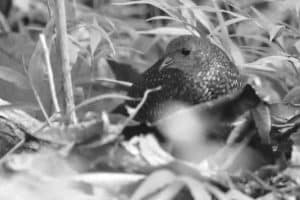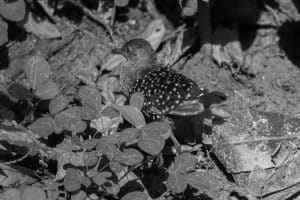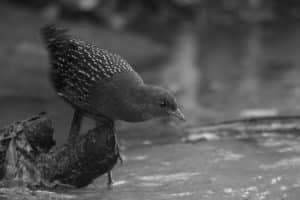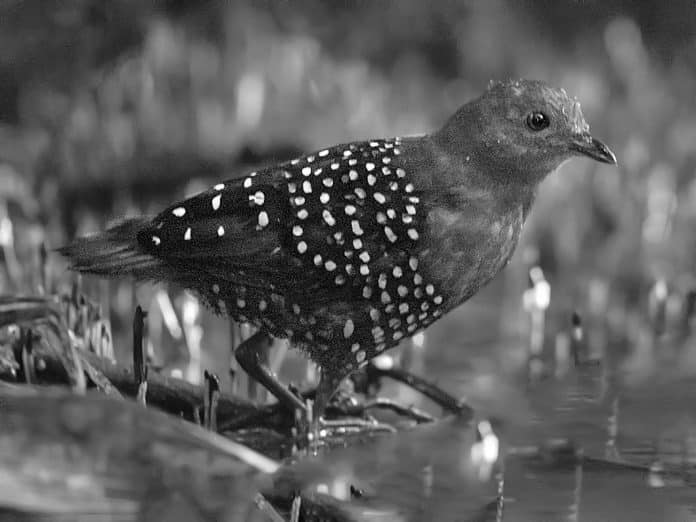Introduction to Flufftails in Tanzania
Tanzania, a country known for its diverse wildlife and stunning landscapes, is home to a unique and elusive bird species called flufftails. Flufftails in Tanzania are small, marshland birds that inhabit the wetlands and grassy areas of Tanzania. Their distinctive appearance and secretive nature have fascinated researchers and bird enthusiasts alike. In this article, we will delve into the world of flufftails in Tanzania, uncovering the secrets of these mysterious birds.
Habitat and Distribution of Flufftails in Tanzania

Flufftails in Tanzania primarily inhabit the marshlands and wetlands scattered across the country. These birds have adapted to live in dense vegetation and rely on the abundance of water and insects in these habitats. Some of the key areas where flufftails can be found include the Serengeti National Park, Lake Manyara, and the Selous Game Reserve. These locations provide the perfect mix of water sources and vegetation for the flufftails to thrive.
The Elusive Nature of Flufftails
One of the defining characteristics of flufftails is their elusive nature. These birds are notoriously difficult to spot due to their small size and cryptic plumage. Flufftails have a knack for blending into their surroundings, making them challenging to observe even for experienced birdwatchers. Their secretive behavior and preference for dense vegetation further add to the challenge of studying them in their natural habitat.
Importance of Studying Flufftails in Tanzania
Studying flufftails in Tanzania is of utmost importance for several reasons. Firstly, these birds are considered an indicator species, meaning their presence or absence can provide valuable insights into the overall health of wetland ecosystems. By studying flufftails, researchers can gain a deeper understanding of the ecological balance in these habitats and identify any potential threats or disturbances.
Secondly, flufftails play a crucial role in the ecosystem by controlling insect populations. These birds feed on various insects, including mosquitoes, which can help regulate disease vectors in wetland areas. Understanding the behavior and ecology of flufftails can contribute to better pest management strategies and promote the overall well-being of both wildlife and human populations.
Research Methods Used to Study Flufftails in Tanzania

Due to the elusive nature of flufftails, researchers have had to employ innovative methods to study these birds in Tanzania. One commonly used technique is the playback method, where researchers play recorded flufftail calls to elicit a response from the birds. This allows them to locate and observe the birds without causing any disturbance to their natural behavior.
Another method used is mist-netting, which involves setting up fine nets in strategic locations to capture flufftails for scientific examination. This technique provides valuable data on the bird’s physical characteristics, breeding patterns, and overall health. By combining these methods with traditional field observations, researchers can gather comprehensive information about flufftails in Tanzania.
Discoveries and Findings about Flufftails in Tanzania
Over the years, research efforts have yielded fascinating discoveries and findings about flufftails in Tanzania. One such discovery is the identification of multiple flufftail species within the country. Previously, it was believed that only one species of flufftail inhabited Tanzania, but recent studies have revealed the presence of at least three distinct species. This finding highlights the rich biodiversity of Tanzania and the importance of continued research in uncovering new information about these birds.
Another significant finding is the role of flufftails in seed dispersal. Researchers have observed flufftails feeding on various fruits and berries, and their droppings have been found to contain seeds. This suggests that flufftails play a crucial role in the dispersal of plant species within wetland ecosystems, contributing to the overall diversity and regeneration of these habitats.
Conservation Efforts for Flufftails in Tanzania
Recognizing the importance of conserving flufftails and their habitats, Tanzania has implemented various conservation measures. Protected areas such as national parks and game reserves have been established to safeguard the natural habitats of these birds. Additionally, education and awareness programs have been initiated to promote the conservation of flufftails among local communities and tourists.
Collaborative efforts between government agencies, conservation organizations, and researchers have also been instrumental in developing conservation strategies for flufftails. These include habitat restoration, monitoring programs, and the establishment of protected corridors to ensure the connectivity of flufftail populations across different wetland areas.
Challenges and Threats Facing Flufftails in Tanzania

Despite conservation efforts, flufftails in Tanzania face several challenges and threats. Habitat destruction and degradation due to human activities, such as agriculture and infrastructure development, pose a significant risk to these birds. Wetland drainage and pollution further exacerbate the threats faced by flufftails, impacting their breeding success and overall survival.
Climate change is another concern for flufftails in Tanzania. Rising temperatures and altered rainfall patterns can disrupt the delicate balance of wetland ecosystems, affecting the availability of food and suitable breeding conditions for these birds. As the climate continues to change, it is crucial to monitor and mitigate the impacts on flufftails and their habitats.
How You Can Get Involved in Flufftail Conservation in Tanzania
If you are passionate about bird conservation and want to contribute to the protection of flufftails in Tanzania, there are several ways you can get involved. Supporting local conservation organizations and initiatives financially or through volunteering can make a significant difference. By raising awareness among your friends, family, and community about the importance of flufftail conservation, you can help garner support and create a positive impact.
Furthermore, if you have the opportunity to visit Tanzania, make sure to adhere to responsible tourism practices. Respect the natural habitats of flufftails and other wildlife by following designated trails, avoiding littering, and refraining from any activities that may disturb the birds or their habitats. Remember, every small action can contribute to the conservation of these beautiful and elusive creatures.
Conclusion: The Future of Flufftails in Tanzania
Flufftails in Tanzania are a captivating and enigmatic species that continue to intrigue researchers and nature enthusiasts alike. Through dedicated research, conservation efforts, and public participation, we can unravel the secrets of these elusive marshland birds and ensure their survival for generations to come. By understanding and protecting the habitats that support flufftails, we not only safeguard the future of these birds but also contribute to the overall conservation of Tanzania’s unique biodiversity. Join the mission to conserve flufftails in Tanzania and be a part of this incredible journey. Together, we can make a difference.

































